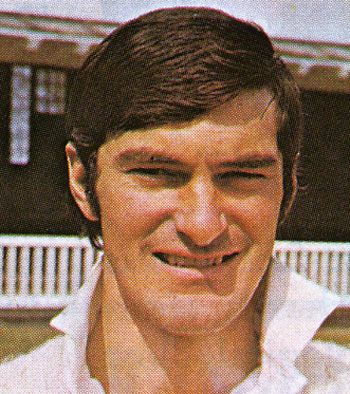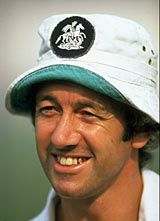For all the selection dilemmas thrown up in this search for England's finest, no single poser can generate more debate than the hunt for the wicketkeeper. What, exactly, is the role that you wish to have fulfilled by the man at No. 7? Should you select the superior gloveman, a player guaranteed to cling on to every nick and to cut off every bye, or should you sacrifice some of that expertise in order to shoehorn an extra batsman into your line-up?
The stumper v stopper debate is one that has existed since the beginnings of time, but rarely more vehemently than in England. When Jack Russell was omitted from the tour of India in 1992-93 - in favour of Alec Stewart and the supposedly superior batsman, Richard Blakey - the MCC tabled a motion of no-confidence in the selectors, but every generation has its own tale of disputed priorities.
Les Ames, who has made it onto this shortlist after a decade of excellence in the 1930s, kept his rival George Duckworth waiting and hoping for a chance to demonstrate his class - 24 matches in a 12-year career were scant reward for his skills. Likewise, Godfrey Evans (a narrow omission from the reckoning) put Northamptonshire's Keith Andrew deep in the shade. And Bob Taylor was Alan Knott's uncomplaining understudy for innumerable tours throughout the 1970s.
Latterly, Geraint Jones and Matt Prior have been picked (and often derided for their clunky stumpwork) ahead of purists such as Chris Read and James Foster, and doubtless the same debate will extend into future generations - although the emergence of Twenty20 cricket may yet spark a renaissance for the lost art of wicketkeeping.
For now, however, our shortlist reflects the general preference for stoppers over stumpers. Five names make the cut, three of whom were worthy of Test selection as out-and-out batsmen. But when it comes to England's all-time XI, is competence sufficient, or should only the very best catcher make the grade?
Alan Knott England's original jack-in-a-box. A superb No. 7 and almost without fault behind the stumps, especially when standing up to his Kent colleague Derek Underwood. Featured in 89 of England's 93 Tests until he joined World Series Cricket in 1977.
Alec Stewart The allrounder England took for granted. England's most capped cricketer could have been one of their outstanding opening bats, but he instead perfected his wicketkeeping to answer his country's call.
Bob Taylor The silkiest gloveman of his generation, but habitually overlooked on account of Knott's superior batting. Nevertheless, still good enough to stand in during a Lord's Test in 1986, several years after his retirement.
Les Ames England's pre-war stalwart, and Douglas Jardine's pick to partner Harold Larwood in the Bodyline Ashes. Another of Kent's fine dynasty of stumpers, he was a classy batsman in his own right, amassing eight centuries in 47 Tests.
Jack Russell Quirky, eccentric and brilliant, Russell was arguably England's one world-class player of the 1990s, but his perceived frailties with the bat cost him many more caps. Johannesburg 1995-96 was his finest hour - 11 catches, and a match-saving stand with Mike Atherton.





